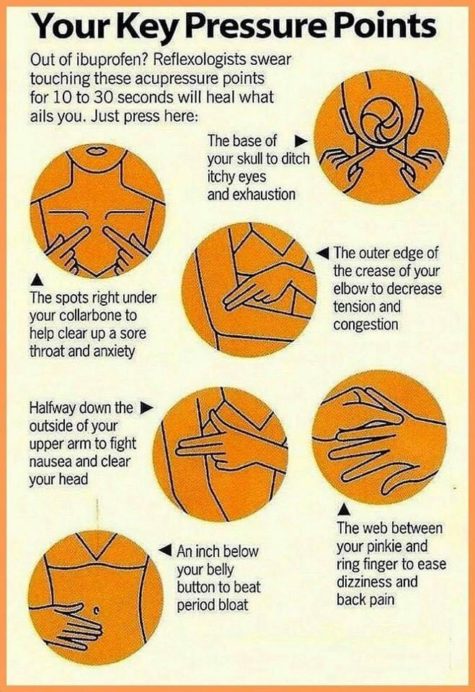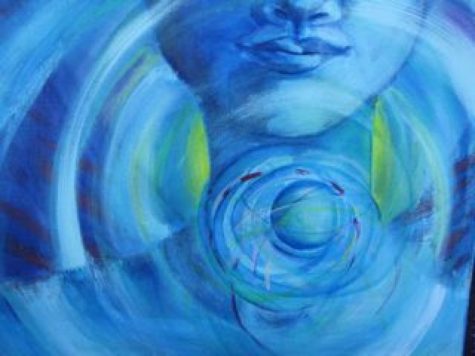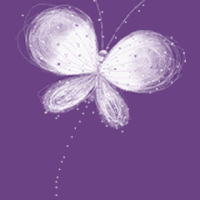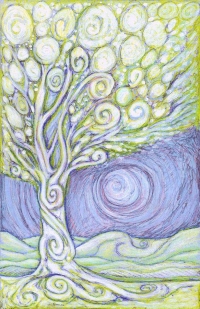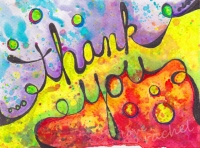shirleytwofeathers
Sleep Positions
Did you know that when you sleep you place your hands on the parts of the body that require healing?
- Above your head – you seek greater spiritual connection.
- On your chest – you have feelings that you still need to heal.
- Stomach – anger and furious feelings.
- Between your legs – fear, feelings of emptiness.
- Sex organs or near them – sexual problems and lack of expression.
- Under your pillow – hidden emotions, not showing what we really feel or our true intentions.
- Hugging yourself – lack of affection or support from your loved ones.
- Shoulders – exhaustion, lack of energy.
- The hands between your head and the pillow – there is tranquility within you.
If you don’t place your hands on your body while sleeping it means you are fine and in peace with yourself. If you hug your partner, It means nothing but the love you have for them.
Your Key Pressure Points
Blanket Forgiveness
Blanket forgiveness is an awesome instant healing technique that uses both touch and words. It is awesome because it works so quickly and it is awesome because you don’t even have to know whom you are forgiving for it to work.
It is based on an assumption that any physical condition involving swelling or infection also contains an emotional component of repressed anger or guilt. Notice that I didn’t say it was caused by emotions, just that it can be useful to assume that emotions are involved in causing at least some of the stress that is maintaining or aggravating the condition. If you can relieve the emotional tension, it will help the body heal more quickly.
The actual technique is very simple:
With your hand or fingers, you lightly touch the area that needs healing while at the same time you repeat the words, “whatever this is related to, I forgive it completely,” for as long as you can or until you get some relief. It’s likely that you’ll feel various physical sensations as you do this, such as tingling or movement or relaxation, and maybe even pain relief.
The more that anger or guilt is connected with the condition, the more quickly and dramatically you will experience healing effects. Even if angry emotions are only a small part of the malady, there will be some degree of benefit.
As I said, you don’t have to know consciously who or what the emotions are directed at. Just holding the idea of forgiveness while touching the infected or swollen area is enough to cause subconscious changes that will ease a lot of stress. The touch itself provides a certain amount of energy as well as helping to keep your mind focused on forgiving.
Note: It’s also very helpful to not just say the words but to experience them as well. What does forgiveness feel like? How does it sound? Is there a flavor? A color? A scent?
Of course, if you do know who or what you are resenting or feeling guilty about, that’s even better. Especially if you can make a breakthrough and are able to totally forgive and release it.
From: Instant Healing by Serge Kahili King
Mumbling As A Healing Aid
A variation on humming is mumbling. (For more info on humming and healing see this post on Humming). What is mumbling? Mumbling is speaking with your mouth closed and your lips moving. It produces an effect like humming with the added benefit of subliminal or subaudial suggestion.
When you apply your fingers or hands to an area of the body for healing, instead of humming you mumble affirmations, blessing, or directions. For example:
- I am healthy and full of energy.
- Angels around me, angels above me, angels all around.
- Muscles are relaxing, inflammation is receding, cells are strengthening.
Or you can just talk about your intentions for the healing, saying whatever comes into your mind in the moment. Just remember to keep it to a mumble.
I did this in a taxi for a friend who had sudden stomach cramps and in about three minutes she was fine again. It’s a very handy technique for all kinds of situations.
I use it on my own neck and shoulders when I’m at the computer for too long and often, right afterward, I just turn my neck and my spine adjusts itself. It’s also great for easing sore muscles after a workout and relieving your own headaches.
However, be aware that some people may be distracted or irritated by the mumbling and will not respond well to it.
From: Instant Healing by Serge Kahili King
Humming
One healing technique that works really well is the combination of sound and touch. All you have to do is hum while your hands are touching yourself or someone else. That’s right, just hum while you touch.
To get a direct sense of what the effect is, hold your palms apart and facing as described in the Healing Hands article, but without rubbing them first. Now hum.
In addition to the vibration in your body, you will feel a tingling in your hands and perhaps even the soft pressure sensation between them.
Whenever you have aches or pains or places that need healing, you can put your hands or fingers on them and hum your way to health. Actually, it will help to relieve tension and speed up your body’s natural healing process even faster than touch alone.
You can experiment with humming high notes or low notes, or even your favorite tunes. I’ve found that the effect is stronger if you keep your attention on where your hands are touching while you hum. The effect is also stronger when you hum with your mouth closed because this produces a stronger vibration within your body, which transfers more energy to your hands.
From: Instant Healing by Serge Kahili King
Healing Hands
Everyone has healing power. Not only is everyone’s body constantly engaged in healing itself, often in spite of all the things a person may be doing to interfere with it. Everyone has the power to help others heal themselves, too. Right now. This minute.
It’s easy to say that everyone has the ability to heal. How do I prove it? Well, I don’t have to prove it to you. You can prove it to yourself with a few experiments.
Healing Hands Experiment One:
Rub the palms of your hands together and hold your hands with your palms facing each other about six to eight inches apart. You should be aware of the tingling sensation from the rubbing, but now move your hands toward each other in a slightly bouncy kind of way, as if you were thinking about clapping but couldn’t make yp your mind whether to do it or not.
Pay attention to anything you may feel with your palms. If you are like most people, you will feel a slight sensation of resistance, like you were squeezing a soft balloon or pushing similar poles of two magnets together. This is an energy field you are feeling, and it’s what some healers use for healing.
Healing Hands Experiment Two:
Line up three glasses of orange, grapefruit, or apple juice, three cups of coffee or tea, or three glasses of chablis wine. You could use plain water for this, but the experiment results are more definite when something has a bit of a bite to it.
Rub your hands together and then hold one of the cups or glasses in your hands for one or two minutes and taste the liquid. Then taste the liquid in the other two containers. Taste the first one again. Notice any difference? You have just “healed” the liquid.
The reason I suggest two controls is so you can be more certain the difference is real. Typically, the “healed” liquid has less bite or bitterness, it becomes more mellow. Some people think it tastes sweeter. Some don’t think that the change is an improvement.
So Now What?
The nest time you are around someone who has an ache or a pain, and who is willing to let you experiment on them, rub your hands till they tingle and just lay them on the person’s sore area for a minute or two. (This even works through clothing.)
You will get much better results if you keep your attention on what you are doing. I know some systems teach that the energy just flows through you so you can let your mind wander, but energy flows where attention goes, and your hands will have more energy if you stay focused.
If the person experiences any relief at all, the experiment is a success.
From: Instant Healing by Serge Kahili King
The Stress Factor
From this great little book, Instant Healing, by Serge Kahili King, we have this nice little article about the stress factor and how it relates to illness and healing:
No matter what kind of disharmony one is talking about, no matter what the name is of the disease or illness that may be involved, and no matter whether the condition is primarily physical or mental, there is always some degree of physical tension present.
It’s common to think of tension as a result of illness, except where certain kinds of stress are thought to contribute to illness, but let’s play with another idea. What if tension were not an effect of illness, but the cause? If this were so, then all one would have to do is promote healing would be to relieve the tension.
Before I discuss relieving tension, however, it will be useful to examine the ways in which tension builds up in the first place. I’ll begin by looking at the source of tension itself, a thing called “stress.”
According to Miriam-Webster’s Collegiate Dictionary, 10th edition, stress is “a physical, chemical, or emotional factor that causes bodily or mental tension and may be a factor in disease causation” and “a state resulting from a stress, especially one of bodily or mental tension resulting from factors that tend to alter an existent equilibrium.” In plain language, this means that different kinds of stress can cause tension in the mind and body, and that we can get “stressed” or tense from resistance to change.
In another part of the definition, I have substituted the word “thing” where Webster used “body or body part.” This section says that stress is a “constraining force or influence, as a force exerted when one thing presses on, pulls on, pushes against, or tends to compress or twist another thing, especially the intensity of this mutual force and the deformation caused in a thing by such a force.”
The plain language translation is that stress is not only the action of pressing, pulling, pushing, compressing or twisting. It is also the reaction of pressing, pulling, pushing, compressing, or twisting against the other force. Stress isn’t stress unless there is resistance. It is the resistance that causes the tension, and the tension that causes the problems.
Note also that a “constraining force or influence” can also come from a lack of something, such as food, water, or love, and is not limited to something active.
Stress in and of itself, isn’t bad. It’s vital for building muscles, moving, breathing, motivation, and a number of other things that are useful and necessary. But if you try to lift a heavy weight for too long, the muscles will break down instead of build up. If you eat so much healthy food that your stomach is ready to burst, you are doing yourself more harm than good. If you try to save the world by making people change, you’ll be so stressed out that you’ll accomplish very little.
Examine your own experience and you will find that it is not just the ordinary stress of daily living, but excessive sudden stress (acute stress) or sustained excessive stress over a period of time (chronic stress) that causes the severe problems. Too much tension, one could say, although “too much” will differ among individuals and circumstances.
A deeper explanation of the different types of stress can be found here:
- The Physical Stress Factor
- The Emotional Stress Factor
- The Mental Stress Factor
- The Spiritual Stress Factor
Many modern healing systems are often ineffective because they are overly exclusive. In other words, they tend to treat illness as being caused only by physical or emotional or mental or spiritual conditions, and to reject some or all of the others as having no bearing on the problem.
Yet tension can come from any of these realms and there is usually a combination of more than one in a particular symptom. Even something as simple as a smashed finger can be related to feelings of guilt, or confusion about a life direction, or to spiritual alienation, or to all three at once.
If the finger is only treated at the physical level, the healing will be slowed down by the tension being maintained by one of the other conditions. A healer ignores any one of them at the peril of the healee. Frequently, dramatic improvement in mental health occurs through nutrition, tumors are removed with hypnosis, and emotional release cures spiritual apathy.
In my view of healing, excessive physical, emotional, mental, or spiritual stress, or any combination of these, cause the excessive tension that produces illness or disharmony. It follows, therefore, that reducing or removing the stress, either the external condition or the internal resistance, would allow a relaxation of the tension that would either result in a healing or greatly benefit the healing process.
The Emotional Stress Factor
This is part of a series of articles about The Stress Factor, from Instant Healing by Serge Kahili King.
Emotional stress is usually thought to be generated externally, in other words, created by what someone else is doing to you. This perception is so widespread that many people are paid compensation for the emotional stress that others have caused them.
In fact, emotional stress happens only when you become afraid or angry or excited, and all of these are internally generated responses. It’s easier, and sometimes financially profitable, to blame others for making you feel bad, but you really do it to yourself. One person may be bothered excessively by a situation that would be taken in stride by another. Your attitude toward what others do has more effect on you than what they do.
The emotions most likely to cause stress are fear, anger, and excitement. Of course, there are variations and levels of these emotions. Emotions related to fear are anxiety, panic, terror, and embarrassment. Some related to anger are jealousy, envy, sadness, depression and grief. Excitement includes enthusiasm and positive anticipation.
In a state of fear, your body is trying to get away from what is fearful. It would actually run if it could. If you decide not to run, the impulse to do so is still there, and the conflict between the impulse to run and the decision not to causes physical tension. In extreme fear, the tension can become so great that fainting occurs or body functions are impaired.
In an angry state, your body is trying to push something away, forcefully change it, or hurt it, and any of these impulses causes tension, too, especially when they are suppressed.
Fear and anger are used to resist people and situations and that gets translated by your body into physical tension. Sustained excitement can lead to tension caused by the body’s need to rest. Acute or chronic fear, anger, or excitement can be very stressful in terms of the physical tension they produce.
Of course, direct muscle tension is not the only physical response to emotional stress. Chemical changes occur as well which can produce stress effects on other systems of the body that lead indirectly to increased physical tension. In fact, emotional and physical responses are so interrelated that chemical changes in the body, either natural or caused by food, drugs, or herbs, can induce emotional stress and physical tension. Endorphins, caffeine, alcohol, heroin, and cocaine or some of the better known substances that can do this.
The Physical Stress Factor
This is part of a series of articles about The Stress Factor, from Instant Healing by Serge Kahili King.
Physical stress is a relatively simple phenomenon to describe. After engaging in physical effort for a long time the body begins to resist the activity more and more until exhaustion or accident forces it to stop.
I would point out, though, that the more enjoyable the effort seems to be, the longer you can continue it, because you are not resisting it as much. Low resistance means less tension, and less tension means less effect from the stress. If you love to play volleyball, you may be able to do it for hours and hours and end up pleasantly tired but exhilarated. If you hate to do housework or clean out the garage, however, you may end up exhausted and achy after a couple of hours.
Another kind of physical stress that produces tension occurs when you are poked or prodded with something sharp, hard, or excessively hot or cold. Although you don’t think it’s strange to be cut or bruised or burned by such contact, some people’s injuries remain for a long time, while others are able to heal very quickly, and still others can walk on fire or get punctured by nails without harm.
Having walked on extremely hot lava rocks barefoot without injury, and having healed broken bones, burns, and bruises of my own in under an hour many times, I can tell you that reducing tension as quickly as possible is a critical factor in the length of the healing process.
Physical stress can also come from reactions to the environment. Allergies are so common that many people take them for granted, and some people are highly sensitive to trace amounts of natural and man made chemicals and to electromagnetic radiation. The body tries to protect itself against such intrusions not only by internal chemical means, but also by creating a barrier of muscle tension (note that our internal organs and nerves are surrounded by muscle tissue). And then there is the stress caused by such things as hunger, thirst, and lack of movement. It isn’t very hard to see how physical stress can cause physical tension.
The Mental Stress Factor
This is part of a series of articles about The Stress Factor, from Instant Healing by Serge Kahili King.
Your slightest thought causes a slight physical response. Your strongest thoughts cause strong physical responses. Remembering, imagining, planning, speculating, wondering, meditating, and any other form of mental activity have corresponding physical effects.
That means your body automatically tries to carry out the physical equivalent of your thoughts by activating your nervous system, modifying your breathing pattern, altering your hormonal and other chemical output, and adjusting your muscle tension, among other things.
If you remember water skiing, the muscles you used when you did it twitch right now in resonance with the mental act of remembering. If you wish you could kick your boss in the rear, the muscles required to do that tense up in preparation for the act. The more abstract your thinking – that is, the less related your thinking is to any kind of physical action – the less response there is in your body. However, sustained abstract thinking accompanied by shallow breathing and an unchanging posture can result in unhealthy physical tension.
Criticism, denial, doubt, confusion, and conflicting beliefs or motivations all produce mental stress and can cause physical tension. Criticism, by itself, is similar to anger without the depth of emotion. When you criticize, you are experiencing an impulse to push, change, or hurt, and when the body tries to respond to the impulse, the effort produces physical tension.
Denial is a mental version of fear, with the same impulse to move away from something and the same kind of tension that results. Doubt occurs when ideas are in conflict, and confusion occurs when choices are in conflict.
When your stressful thoughts also generate stressful emotions, the effects of emotional stress are added to the effects of mental stress and physical tension is increased even more.

